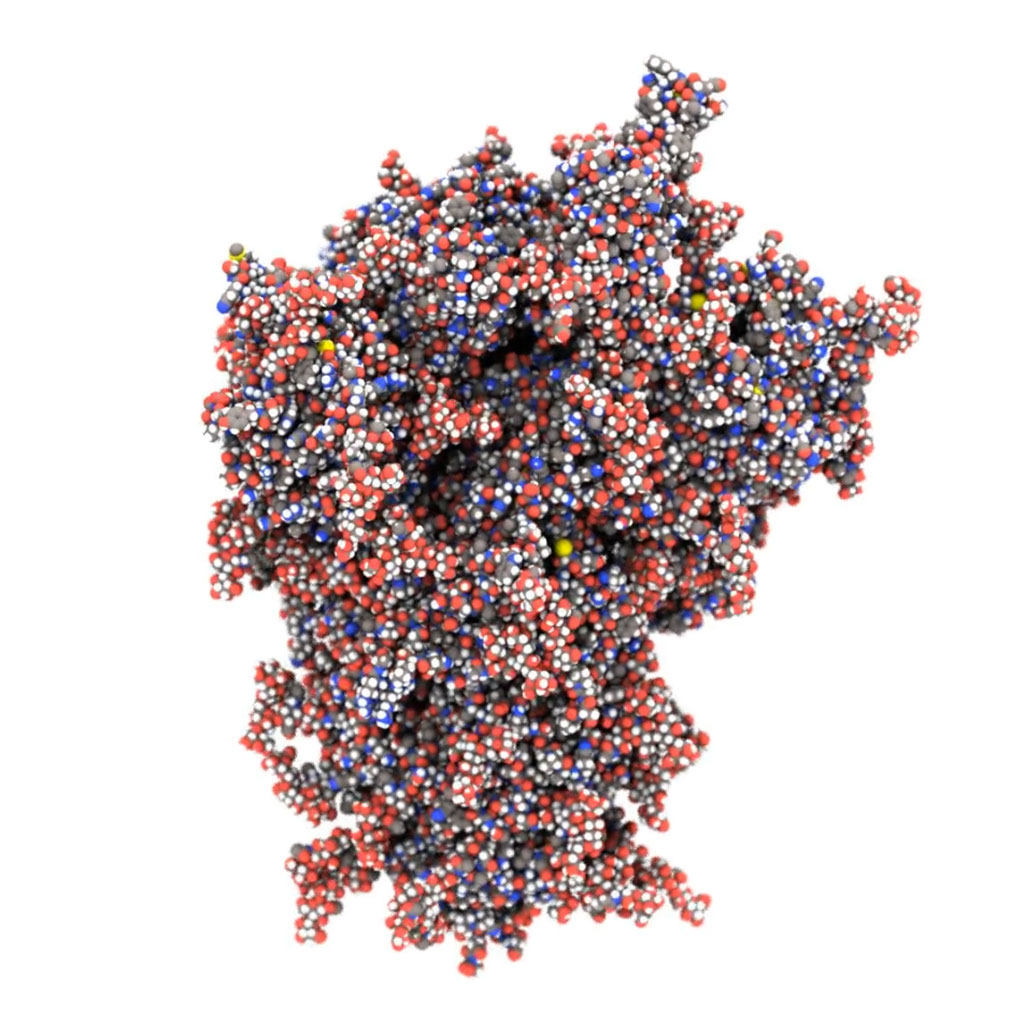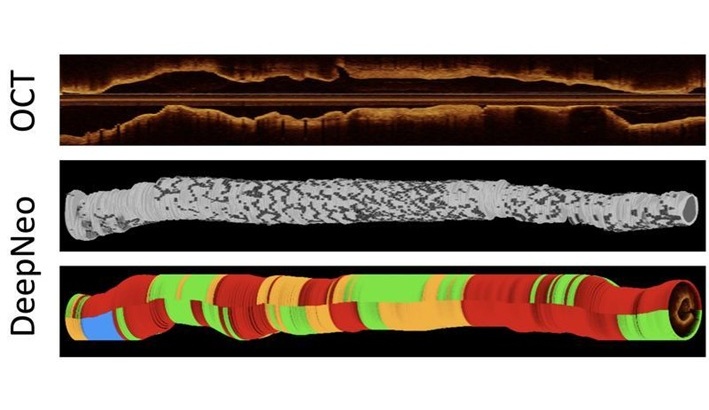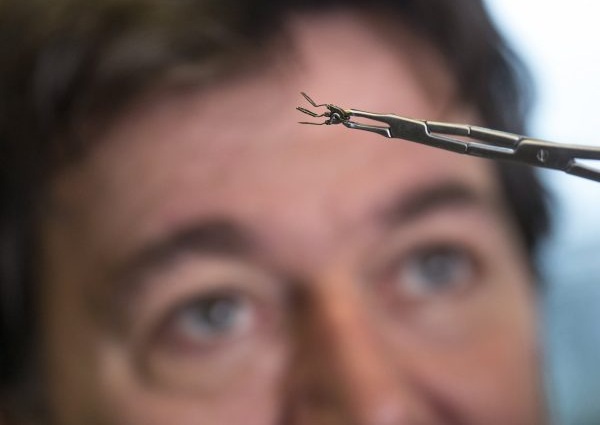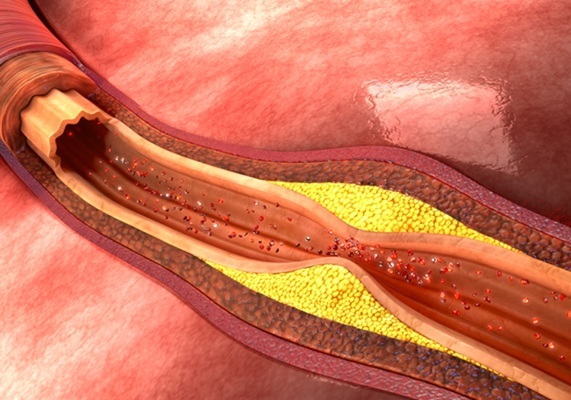COVID-19 Vaccines Unlikely to Be Affected by Recent SARS-CoV-2 Mutations, Finds Study
|
By HospiMedica International staff writers Posted on 09 Oct 2020 |

Image: Biomolecular modelling of the COVID-19 spike protein (Photo courtesy of CSIRO)
New research has shown that potential vaccines should not be affected by how SARS-CoV-2, the virus that causes COVID-19, has changed to date.
Most vaccines under development worldwide have been modeled on the original ‘D-strain’ of the virus, which were more common amongst sequences published early in the pandemic. Since then, the virus has evolved to the globally dominant ‘G-strain’, which now accounts for about 85% of published SARS-CoV-2 genomes. There had been fears the G-strain, or ‘D614G’ mutation within the main protein on the surface of the virus, would negatively impact on vaccines under development. However, researchers from the Commonwealth Scientific and Industrial Research Organization (CSIRO Canberra, Australia) have found no evidence that the change would adversely impact the efficacy of vaccine candidates. Their findings were based on a study in which CSIRO, Australia’s national science agency, tested blood samples from ferrets vaccinated with Inovio Pharmaceuticals’ INO-4800 candidate against virus strains that either possessed or lacked this ‘D614G’ mutation.
“Most COVID-19 vaccine candidates target the virus’ spike protein as this binds to the ACE2 receptors in our lungs and airways, which are the entry point to infect cells,” said Dr. S.S. Vasan, CSIRO’s Dangerous Pathogens Team Leader and the senior author of the paper. “Despite this ‘D614G’ mutation to the spike protein, we confirmed through experiments and modeling that vaccine candidates are still effective. “We’ve also found the G-strain is unlikely to require frequent ‘vaccine matching’ where new vaccines need to be developed seasonally to combat the virus strains in circulation, as is the case with influenza.”
Dr. Alex McAuley, CSIRO research scientist and first author of the paper, said ferrets vaccinated with INO-4800 demonstrated a strong immune response. “We found that ferrets vaccinated with Inovio Pharmaceuticals’ candidate developed a good B-cell response in terms of neutralizing antibodies against SARS-CoV-2 strains, which is important for the short-term efficacy of a vaccine,” Dr. McAuley said. “We are also studying the T-cell response which is important for long-term efficacy.”
The modeling enabled the interactions between the vaccine and virus to be simulated and visualized, according to Dr. Michael Kuiper, co-author and Team Leader of the Molecular & Materials Modeling Group at CSIRO’s Data61.
“If we understand the process of a viral infection, we paint a picture of its vulnerabilities. Bio-molecular modeling helps us to do this,” Dr. Kuiper said. “By visualizing molecular structure, we were able to support the study’s inference that the immune response generated by the vaccine candidate is equally effective against both D- and G- strains of SARS-CoV-2.”
Related Links:
Commonwealth Scientific and Industrial Research Organization (CSIRO)
Most vaccines under development worldwide have been modeled on the original ‘D-strain’ of the virus, which were more common amongst sequences published early in the pandemic. Since then, the virus has evolved to the globally dominant ‘G-strain’, which now accounts for about 85% of published SARS-CoV-2 genomes. There had been fears the G-strain, or ‘D614G’ mutation within the main protein on the surface of the virus, would negatively impact on vaccines under development. However, researchers from the Commonwealth Scientific and Industrial Research Organization (CSIRO Canberra, Australia) have found no evidence that the change would adversely impact the efficacy of vaccine candidates. Their findings were based on a study in which CSIRO, Australia’s national science agency, tested blood samples from ferrets vaccinated with Inovio Pharmaceuticals’ INO-4800 candidate against virus strains that either possessed or lacked this ‘D614G’ mutation.
“Most COVID-19 vaccine candidates target the virus’ spike protein as this binds to the ACE2 receptors in our lungs and airways, which are the entry point to infect cells,” said Dr. S.S. Vasan, CSIRO’s Dangerous Pathogens Team Leader and the senior author of the paper. “Despite this ‘D614G’ mutation to the spike protein, we confirmed through experiments and modeling that vaccine candidates are still effective. “We’ve also found the G-strain is unlikely to require frequent ‘vaccine matching’ where new vaccines need to be developed seasonally to combat the virus strains in circulation, as is the case with influenza.”
Dr. Alex McAuley, CSIRO research scientist and first author of the paper, said ferrets vaccinated with INO-4800 demonstrated a strong immune response. “We found that ferrets vaccinated with Inovio Pharmaceuticals’ candidate developed a good B-cell response in terms of neutralizing antibodies against SARS-CoV-2 strains, which is important for the short-term efficacy of a vaccine,” Dr. McAuley said. “We are also studying the T-cell response which is important for long-term efficacy.”
The modeling enabled the interactions between the vaccine and virus to be simulated and visualized, according to Dr. Michael Kuiper, co-author and Team Leader of the Molecular & Materials Modeling Group at CSIRO’s Data61.
“If we understand the process of a viral infection, we paint a picture of its vulnerabilities. Bio-molecular modeling helps us to do this,” Dr. Kuiper said. “By visualizing molecular structure, we were able to support the study’s inference that the immune response generated by the vaccine candidate is equally effective against both D- and G- strains of SARS-CoV-2.”
Related Links:
Commonwealth Scientific and Industrial Research Organization (CSIRO)
Latest COVID-19 News
- Low-Cost System Detects SARS-CoV-2 Virus in Hospital Air Using High-Tech Bubbles
- World's First Inhalable COVID-19 Vaccine Approved in China
- COVID-19 Vaccine Patch Fights SARS-CoV-2 Variants Better than Needles
- Blood Viscosity Testing Can Predict Risk of Death in Hospitalized COVID-19 Patients
- ‘Covid Computer’ Uses AI to Detect COVID-19 from Chest CT Scans
- MRI Lung-Imaging Technique Shows Cause of Long-COVID Symptoms
- Chest CT Scans of COVID-19 Patients Could Help Distinguish Between SARS-CoV-2 Variants
- Specialized MRI Detects Lung Abnormalities in Non-Hospitalized Long COVID Patients
- AI Algorithm Identifies Hospitalized Patients at Highest Risk of Dying From COVID-19
- Sweat Sensor Detects Key Biomarkers That Provide Early Warning of COVID-19 and Flu
- Study Assesses Impact of COVID-19 on Ventilation/Perfusion Scintigraphy
- CT Imaging Study Finds Vaccination Reduces Risk of COVID-19 Associated Pulmonary Embolism
- Third Day in Hospital a ‘Tipping Point’ in Severity of COVID-19 Pneumonia
- Longer Interval Between COVID-19 Vaccines Generates Up to Nine Times as Many Antibodies
- AI Model for Monitoring COVID-19 Predicts Mortality Within First 30 Days of Admission
- AI Predicts COVID Prognosis at Near-Expert Level Based Off CT Scans
Channels
Critical Care
view channel
AI Model Analyzes Patient Data to Diagnose Multiple Sclerosis With 90% Accuracy
Multiple sclerosis (MS) is a chronic inflammatory condition affecting the central nervous system. Most patients initially experience the relapsing-remitting form (RRMS), characterized by periods of symptom... Read more
Magnetically Navigable Microparticles Enable Targeted Drug Delivery
Abdominal aortic aneurysms (AAA) can be life-threatening if not treated and result in nearly 10,000 deaths annually. Researchers working to improve treatments for AAA could now make it possible for doctors... Read more
AI-Powered Algorithm Automates Analysis of Coronary Stents After Implantation
Every year, over three million people globally receive stents to open blocked blood vessels caused by heart disease. However, monitoring the healing process after stent implantation remains a significant challenge.... Read moreSurgical Techniques
view channel
DNA Origami Improves Imaging of Dense Pancreatic Tissue for Cancer Detection and Treatment
One of the challenges of fighting pancreatic cancer is finding ways to penetrate the organ’s dense tissue to define the margins between malignant and normal tissue. Now, a new study uses DNA origami structures... Read more
Pioneering Sutureless Coronary Bypass Technology to Eliminate Open-Chest Procedures
In patients with coronary artery disease, certain blood vessels may be narrowed or blocked, requiring a stent or a bypass (also known as diversion) to restore blood flow to the heart. Bypass surgeries... Read more
Intravascular Imaging for Guiding Stent Implantation Ensures Safer Stenting Procedures
Patients diagnosed with coronary artery disease, which is caused by plaque accumulation within the arteries leading to chest pain, shortness of breath, and potential heart attacks, frequently undergo percutaneous... Read more
World's First AI Surgical Guidance Platform Allows Surgeons to Measure Success in Real-Time
Surgeons have always faced challenges in measuring their progress toward surgical goals during procedures. Traditionally, obtaining measurements required stepping out of the sterile environment to perform... Read morePatient Care
view channel
Portable Biosensor Platform to Reduce Hospital-Acquired Infections
Approximately 4 million patients in the European Union acquire healthcare-associated infections (HAIs) or nosocomial infections each year, with around 37,000 deaths directly resulting from these infections,... Read moreFirst-Of-Its-Kind Portable Germicidal Light Technology Disinfects High-Touch Clinical Surfaces in Seconds
Reducing healthcare-acquired infections (HAIs) remains a pressing issue within global healthcare systems. In the United States alone, 1.7 million patients contract HAIs annually, leading to approximately... Read more
Surgical Capacity Optimization Solution Helps Hospitals Boost OR Utilization
An innovative solution has the capability to transform surgical capacity utilization by targeting the root cause of surgical block time inefficiencies. Fujitsu Limited’s (Tokyo, Japan) Surgical Capacity... Read more
Game-Changing Innovation in Surgical Instrument Sterilization Significantly Improves OR Throughput
A groundbreaking innovation enables hospitals to significantly improve instrument processing time and throughput in operating rooms (ORs) and sterile processing departments. Turbett Surgical, Inc.... Read moreHealth IT
view channel
Printable Molecule-Selective Nanoparticles Enable Mass Production of Wearable Biosensors
The future of medicine is likely to focus on the personalization of healthcare—understanding exactly what an individual requires and delivering the appropriate combination of nutrients, metabolites, and... Read more
Smartwatches Could Detect Congestive Heart Failure
Diagnosing congestive heart failure (CHF) typically requires expensive and time-consuming imaging techniques like echocardiography, also known as cardiac ultrasound. Previously, detecting CHF by analyzing... Read moreBusiness
view channel
Expanded Collaboration to Transform OR Technology Through AI and Automation
The expansion of an existing collaboration between three leading companies aims to develop artificial intelligence (AI)-driven solutions for smart operating rooms with sophisticated monitoring and automation.... Read more

















